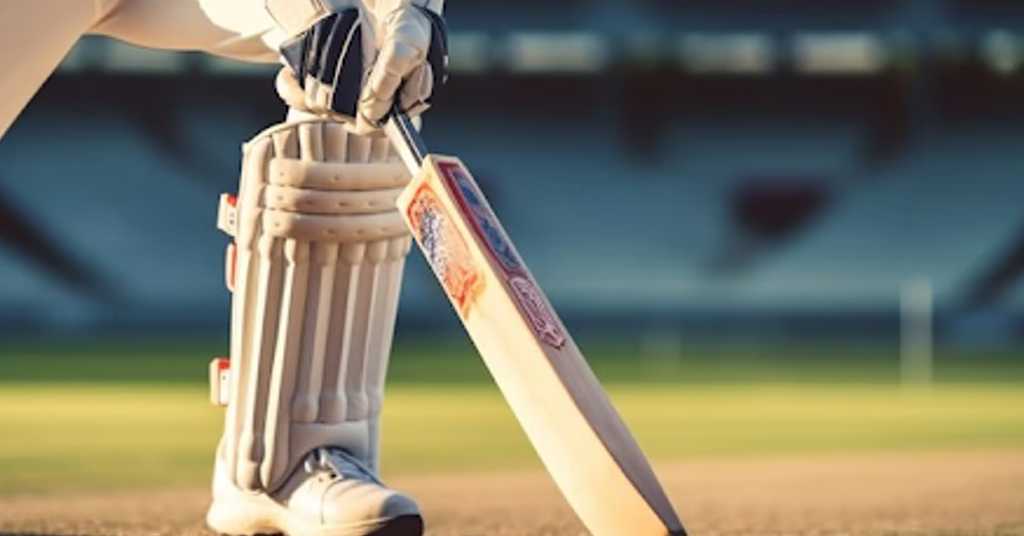The Role of Grip and Handle in Bat Control and Shot-Making

In the game of cricket, where split-second decisions and precise execution define success, the role of a bat's grip and handle is often overlooked but critically important. These components play a crucial role not only in how a batsman feels the bat in their hands but also in their ability to control shots effectively. In this blog, we delve into the significance of grip and handle in bat control, shot-making prowess, and how batsmen can optimize these elements to enhance their performance at the crease.
Understanding the Basics: Grip and Handle
Grip Dynamics:
- Purpose: Provides stability, control, and comfort during batting.
- Execution: Choose a grip that suits your hand size and preference—typically octopus, chevron, or dynamic grips—to ensure a secure hold and reduce slippage during shots.
Handle Comfort:
- Purpose: Transmits feel and feedback from the bat to the hands.
- Execution: Opt for a handle size and shape that complements your grip style and batting technique. A thicker handle offers more control and power, while a thinner handle enhances maneuverability and wrist action.
Impact on Shot-Making Precision
Controlled Placement:
- Purpose: Directs ball placement through precise bat angles and manipulation.
- Execution: Adjust grip pressure and handle orientation to guide shots into gaps and manipulate field placements, optimizing run-scoring opportunities.
Power Generation:
- Purpose: Transfers energy efficiently from body to bat for powerful strokes.
- Execution: Maintain a firm grip while allowing flexibility for bat speed. Use handle leverage to maximize power in drives, pulls, and lofted shots, translating body momentum into impactful stroke play.
Technique and Adjustment
Adapting to Conditions:
- Purpose: Adjust grip and handle for varying pitch conditions and ball behavior.
- Execution: Modify grip tightness and handle grip during innings to counteract swing, seam, or spin. Adapt handle position to control bat swing and contact points, ensuring effective shot execution.
Fine-Tuning Technique:
- Purpose: Refine shot-making technique through grip and handle adjustments.
- Execution: Experiment with handle angles, grip firmness, and wrist action in practice sessions. Analyze shot outcomes to optimize grip and handle settings for consistent performance under different bowling scenarios.
Comfort and Consistency
Reducing Fatigue:
- Purpose: Minimize hand and wrist strain during extended batting periods.
- Execution: Use ergonomic grips and handle designs that offer comfort and support. Rotate grip positions periodically to distribute pressure evenly and maintain bat control throughout innings.
Longevity and Maintenance:
- Purpose: Preserve bat durability and performance consistency.
- Execution: Regularly inspect grip for wear and tear. Replace worn grips and handle wraps to maintain optimal grip traction and comfort, ensuring prolonged bat effectiveness.
Psychological Edge
Confidence Booster:
- Purpose: Instill confidence in bat control and shot execution.
- Execution: Develop familiarity with grip and handle setup through consistent practice. Trust in grip adjustments and handle preferences to enhance mental readiness and decision-making under pressure.
Conclusion: Maximizing Bat Control and Shot-Making Mastery
The grip and handle of a cricket bat are not just functional components—they are essential tools for batsmen to achieve precision, power, and consistency in shot-making. By understanding their roles in bat control, shot placement, and comfort, batsmen can tailor their grip and handle preferences to suit individual techniques and playing conditions. Embrace the nuances of grip and handle dynamics to elevate your batting prowess, influence match outcomes, and leave a lasting impact on the game of cricket with every stroke of the bat.

